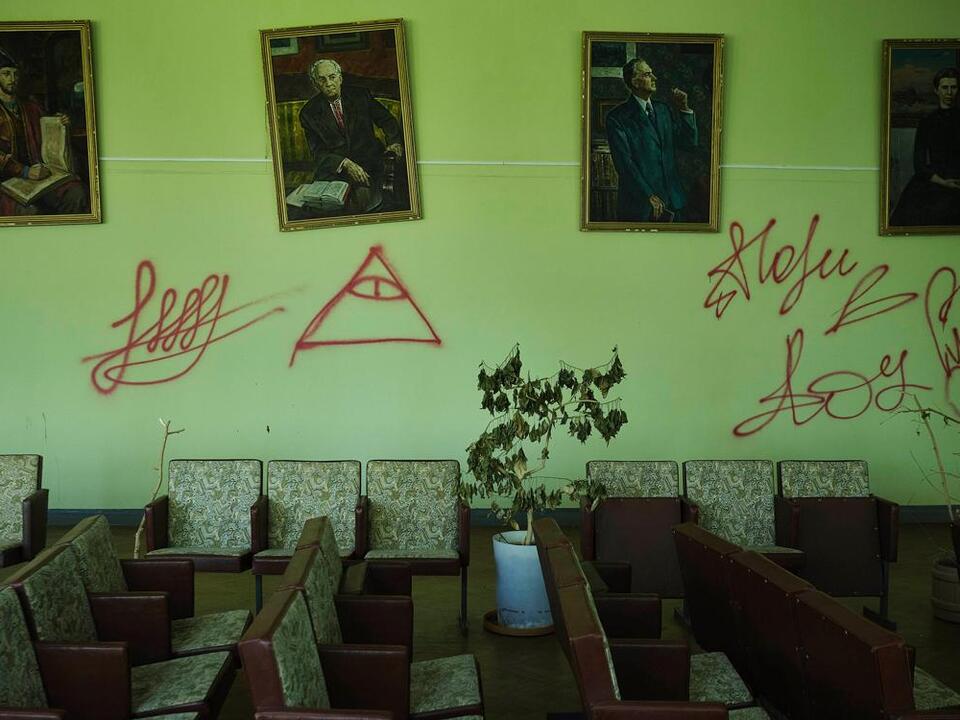Physical Address
304 North Cardinal St.
Dorchester Center, MA 02124
Physical Address
304 North Cardinal St.
Dorchester Center, MA 02124
Review of Chernobyl Roulette by Serhii Plokhy – Wartime Chaos at a Nuclear Plant

On 24 February 2022, workers at the Chornobyl nuclear power station in Ukraine were awoken by explosions. An intense battle was unfolding close to the exclusion zone. By late afternoon, the Russians had seized control. A column of military vehicles halted at a checkpoint, and an officer announced that Moscow was now in charge.
The plant’s 300 personnel, including specialist operators, firefighters, and Ukraine’s national guard troops, became captives. Over the next few weeks, they managed the station’s systems under harsh conditions, cohabitating with their armed occupiers. The invading force had entered from Belarus and proceeded towards Kyiv.
Chernobyl Roulette, penned by Ukrainian historian Serhii Plokhy, provides a gripping narrative of these remarkable events. The tale mirrors the bravery and self-sacrifice displayed by Chornobyl employees during the 1986 nuclear disaster when reactor No. 4 exploded. Some of those on duty in 2022 had also participated in the original Soviet-era cleanup.
Valentyn Heiko, a 59-year-old shift foreman, was among those taken hostage. Demonstrating subtle leadership, Heiko confronted the Russian commanders, insisting they abide by Ukrainian safety rules and act civilly. He threatened to provoke a radiation incident if they did not comply, a bluff that convinced the occupiers.
Heiko noted that while some Russian soldiers were polite, about a third were often drunk and indoctrinated. The occupiers took over the fourth floor of the administration building, exacerbating overcrowding. The staff faced shortages of food, cigarettes, and razors, and the captive nuclear operators couldn’t return home to the nearby town of Slavutych.
Acts of resistance emerged. Liudmyla Kozak, one of 17 imprisoned women, refused to wear a white armband as instructed. The Russians threatened to shoot her, but she defiantly wore a white medical cap embellished with a blue and yellow patch. Despite orders to shut off the radio broadcasting news of Russian setbacks around Kyiv, staff secretly turned it on.
After three weeks, Heiko and his exhausted colleagues could barely function. Astonishingly, 46 volunteers replaced them. The departing shift left via bus through Belarus, crossing the Dnipro River by fishing boat. Heiko carried the station’s Ukrainian flag with him. The new team arrived uncertain if or when they would return.
The Kremlin’s occupation of Chornobyl was marked by recklessness. Soldiers dug trenches in the red forest, one of the world’s most toxic areas. Although it’s unclear if they suffered permanent health damage, Ukrainian officials speculated their heads were “full of sawdust.” Radiation levels rose as Russian vehicles stirred up deadly dust.
Meanwhile, in southern Ukraine, another Russian unit captured the Zaporizhzhia nuclear power station, Europe’s largest. They fired grenades at civilian infrastructure, damaging a reactor. Even now, Russian forces occupy the site, stuffing turbine halls with military kit and using the location to bombard nearby towns.
Last month, Russian soldiers allegedly set a fire in a cooling tower, possibly as a warning following Ukraine’s counter-invasion of Russia’s Kursk region. Since the onset of Moscow’s assault, Vladimir Putin has issued numerous threats of mass destruction against Kyiv and the west. Russian state TV has even discussed nuclear strikes on cities like London, Berlin, and Paris.
The Chornobyl episode, however, concluded on a positive note. On 30 March 2022, Russian forces retreated north from the Kyiv region, taking with them looted items from the plant, including radiation dosimeters, computers, and cars. In the town of Chornobyl, the looters scavenged household goods and antiques, even taking black-and-white TVs and video recorders.
Ukrainian workers who risked their lives to prevent another Chornobyl disaster earned praise. Plokhy views Moscow’s 2022 seizure of two nuclear facilities as a wake-up call, labeling it nuclear terrorism by a rogue nuclear power. The lines between tactical nuclear weapons and civil nuclear facilities are increasingly blurred.
How should the international community respond? Plokhy calls for reforms in nuclear state behavior laws and the International Atomic Energy Agency (IAEA) governing them. Notably, when Russian tanks entered Chornobyl, the IAEA, led by Rafael Grossi, did not condemn the Kremlin but merely appealed to “both sides.”
Plokhy has authored several nonfiction works on Ukraine. Chernobyl: History of a Tragedy and The Russo-Ukrainian War are among his notable contributions. Chernobyl Roulette is another compelling read, celebrating the brave men and women who acted selflessly when protocols and governments failed.
Source: Guardian



